
Following the announcement of the AIA's Regional & Urban Design Awards and Interior Architecture Awards in recent days, the Institute's Committee on the Environment now unveiled the COTE Top Ten Awards winners. Now in its 25th year, the annual program distinguishes significant achievements in advancing climate action through building design.
Perkins & Will managed to pick up two trophies this year for their Life Sciences Building at the University of Washington in Seattle as well as the Daphne Cockwell Health Sciences Complex at Ryerson University in Toronto.
Evaluating this year's submissions on social, economic, and ecological criteria was the 2021 award jury comprising Erica Cochran Hameen, Assoc. AIA, Carnegie Mellon University; Lynn Simon, FAIA, Google; Marlon Blackwell, FAIA, Marlon Blackwell Architects; Michelle Amt, AIA, VMDO Architects; and Renee Cheng, FAIA, University of Washington.
Arizona State University Hayden Library Reinvention, Tempe, Arizona
Ayers Saint Gross
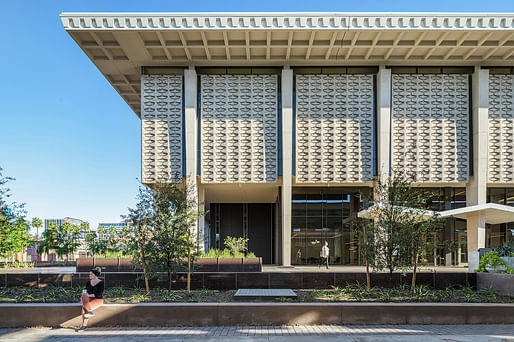
Project excerpt: "The design team and university community shared a vision that Hayden Library needed to transform from a warehouse of books into a place for people while simultaneously celebrating the building’s historic legacy. Located in the heart of campus, Hayden Library anchors two highly utilized pedestrian malls. The new exterior design creates a ground-level plaza to reconnect the tower to campus and reinforces pedestrian connections with double-height glazing and new interior slab openings that create both visual and physical connections. The decision to retain nearly all the existing structural and building envelope elements was born of the desire for historic preservation and maintained the embodied carbon of these enduring assets. Existing granite panels and stained glass are salvaged and reused in the project to elevate their contribution to the building’s architectural experience. Precise restoration and renovation of all existing stairs and guardrails honor the iconic existing building while showcasing new and future uses and details." ~ Read more about this project here.
Civitas, Memphis, Tennessee
archimania

Project excerpt: "The architect/owner wanted to design a progressive, environmentally responsible single-family home that fosters a meaningful experience through connected spatial relationships, transparency, and material continuity while opening up the design process firm-wide to support learning and experimentation in design, construction, and operation. The home occupies a 6,630-square-foot corner greenfield site in a new urbanism development built on a peninsula of land in downtown Memphis, Tennessee. Sited to frame the Mississippi River and Delta beyond, it is of comparable scale to its traditional surroundings while creating a visual threshold between interior and exterior to enhance the private and community experience." ~ Read more about this project here.
Lafayette College Rockwell Integrated Sciences Center, Easton, Pennsylvania
Payette
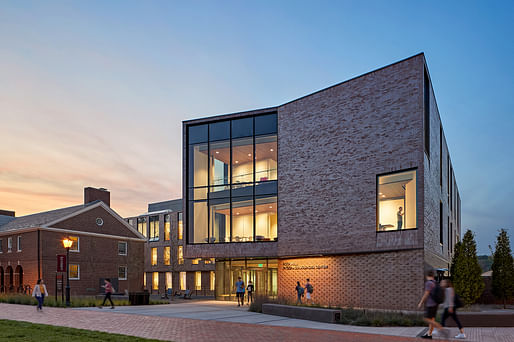
Project excerpt: "This building is the largest single investment by Lafayette College to date and was constructed concurrently with a 20% increase in the campus student population. The existing campus library already does not provide adequate and attractive student study space, so the new science center had to serve as more than a biology and computer science building. Despite its location, tucked away in the corner of an existing courtyard, the building was charged with providing robust spaces for science and a welcoming campus-wide destination. The solution was to create vibrant spaces of varying sizes to attract the entire campus community to meet and study. " ~ Read more about this project here.
Market One, Des Moines, Iowa
Neumann Monson Architects

Project excerpt: "Nothing is more sustainable than breathing new life into an existing resource. Market One tells an important story about the role historic buildings can play in anchoring urban revitalization with sustainable principles. With pragmatic intent and a sensitive touch, Market One harnesses a 1901 manufacturing facility’s inherent flexibility to guide open-ended infill strategies. It integrates comprehensive sustainable strategies and rigorous design into a charismatic existing structure, maintaining the building’s original character and yielding healthy open work environments faithful to its original, airy spaces. The project meets the challenge of pursuing energy efficiency while adhering to National Park Service historic preservation guidelines." ~ Read more about this project here.
Massachusetts Institute of Technology | MIT.nano, Cambridge, Massachusetts
HGA

Project excerpt: "MIT.nano is one of the largest commitments to research in MIT’s history. The research within aims to address some of humanity’s greatest challenges, from sustainable energy to clean water to finding a cure for cancer. Located steps from the iconic Infinite Corridor and the Great Dome, it is home to a cluster of world-class laboratories, including class 100 and 1,000 cleanrooms, imaging suites, MIT.nano-makerspace, and chemistry teaching laboratories." ~ Read more about this project here.
Microsoft Silicon Valley Campus, Mountain View, California
WRNS Studio
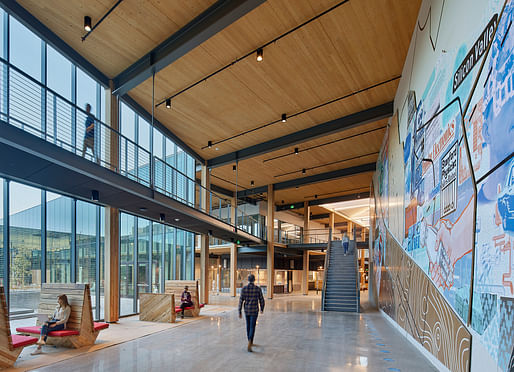
Project excerpt: "Silicon Valley is constrained by access, resources, and competition for talent. A refresh to Microsoft’s Silicon Valley (MSV) campus meant thinking differently about its region and people. At the project start, two key drivers converged: California was experiencing a serious drought; Microsoft needed to increase campus capacity to address business demand. [...] The team employed a holistic, ambitious approach: driving out and using waste; investing in resilient strategies (blackwater system, thermal storage); designing with reduced carbon through reuse and mass timber; and putting wellness, equity, and community front and center." ~ Read more about this project here.
Rainier Beach Clinic, Seattle, Washington
Mahlum
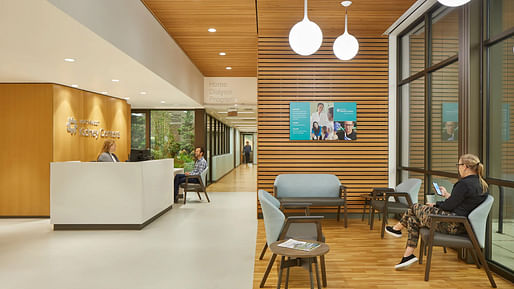
Project excerpt: "Seeking to revolutionize dialysis care with a patient-centric alternative, the team hypothesized that direct views to nature from patient care areas would increase participation with treatment regimens and improve health outcomes, resulting in decreased morbidity and mortality rates. To create patient care areas that position patients with direct views to nature, rigorous plan studies and full-scale mock-ups were conducted to reinvent the clinic environment while maintaining sightlines and workflows essential to clinical safety. The courtyards that punctuate the clinic feature biophilic design strategies, such as biodiverse, seasonal plantings that lower stress and bird habitats within pollinator-friendly plantings that encourage distraction therapy for pain management." ~ Read more about this project here.
Ryerson University Daphne Cockwell Health Sciences Complex, Toronto, Ontario
Perkins & Will

Project excerpt: "Conceived as a living and learning community, the Daphne Cockwell Health Sciences Complex (DCHSC) brings nearly 300,000 square feet of highly sustainable teaching, research, and living space to a tight urban site. Ryerson University occupies one of Toronto’s densest and fastest-growing neighborhoods. While enrollment has increased by 50% since 2010, explosive private development has limited Ryerson’s opportunities to expand. The DCHSC responded to these challenges by proposing a new typology: a vertical campus that celebrates density, urbanity, and a radical mix of uses while exemplifying a holistic approach to health, inclusion, and sustainability in the downtown core." ~ Read more about this project here.
The Kendeda Building for Innovative Sustainable Design, Atlanta, Georgia
Lord Aeck Sargent in collaboration with The Miller Hull Partnership

Project excerpt: "The Kendeda Building for Innovative Sustainable Design at Georgia Tech is a multidisciplinary education building that serves as a working model of what is possible with sustainable design. The building is located at the heart of campus, anchoring the Eco-Commons, an eight-acre restored green space central to the campus master plan. The design team focused on integration and multidimensional solutions using an iterative and systems-based process." ~ Read more about this project here.
University of Washington, Life Sciences Building, Seattle, Washington
Perkins & Will

Project excerpt: "More than one-third of all students at the University of Washington (UW) take courses in biology, the university’s largest department and the largest STEM program in the entire state. The Department of Biology needed a new facility to meet its growing demands while embodying the school’s core values of scientific discovery, innovation, collaboration, active learning, public education, and environmental sustainability. The completed state-of-the-art building elevates the Department of Biology and UW into the next generation of research, teaching, and environmental stewardship." ~ Read more about this project here.

Kinderspace: Architecture for Children's Development #2
Register by Thu, Jan 16, 2025
Submit by Mon, Jun 16, 2025
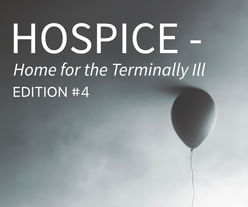
Hospice - Home for Terminally Ill #4
Register by Wed, Jan 15, 2025
Submit by Mon, Jun 16, 2025

The Last Nuclear Bomb Memorial / Edition #5
Register by Thu, Jan 16, 2025
Submit by Wed, Feb 19, 2025

Museum of Emotions / Edition #6
Register by Thu, Jan 23, 2025
Submit by Tue, Apr 29, 2025
No Comments